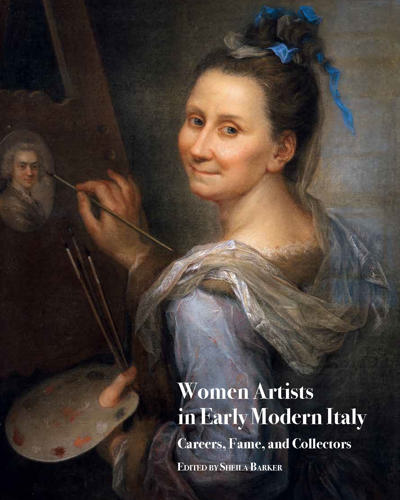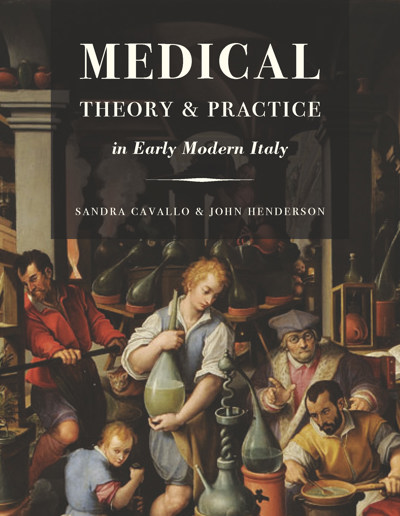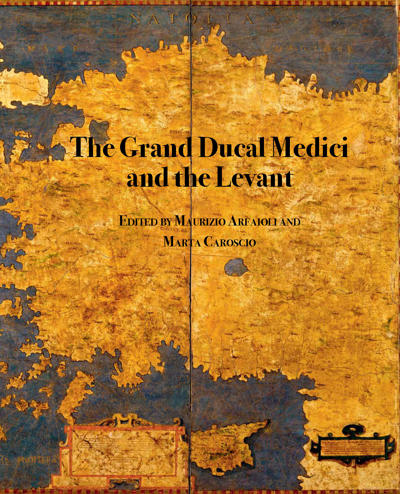
Medical Theory and Practice in Early Modern Italy
Sandra Cavallo, John Henderson (eds)
- Pages: x + 198 p.
- Size:220 x 280 mm
- Illustrations:33 col.
- Language(s):English
- Publication Year:2025
- € 135,00 EXCL. VAT RETAIL PRICE
- ISBN: 978-1-915487-65-0
- Hardback
- Available
This book sheds new light on the intricate relationship between theory and practice in early modern medicine through a series of themes: bodies and disease, medical treatment, pharmacy and public health.
Sandra Cavallo is Emerita Professor of Early Modern History, Royal Holloway, University of London. Her publications include: Artisans of the Body in Early Modern Italy. Identities, Families, Masculinities (2007); Healthy Living in Late Renaissance Italy (2013), and the co-edited Conserving Health in Early Modern Culture: Bodies and Environments in Italy and England (2017), both with Tessa Storey. Among her recent articles: ‘Early vernacular advice literature and its popular appeal in early modern Italy’, Nuncius, 36:2, 2021.
John Henderson is Emeritus Professor of Italian Renaissance History, Birkbeck, University of London, and Emeritus Fellow, Wolfson College, University of Cambridge. His most recent books include: Florence Under Siege: Surviving Plague in an Early Modern City (2019); Plague and the City, edited with Lucas Engleman and Christos Lynteris (2018); Representing Infirmity. Diseased Bodies in Renaissance Italy, edited with Federica Jacobs and Jonathan Nelson (2021); The French Disease in Renaissance Italy: representation and experience (December 2024).
This volume brings together scholars at the forefront of the latest developments in the history of medicine in Italy. In recent years, the traditional separation between studies of medical theory and studies of medical practice has increasingly given way to a more nuanced approach that problematizes the relationship between these fields, which is too often seen as mechanical. Building on these recent trends, this book sheds new light on the complex ways in which medical knowledge and medical practice interacted in a period characterized by the rise of empiricism and the challenges raised by the need to incorporate novel drugs and unfamiliar diseases into the classic paradigms of professional medicine. Focusing on a range of themes — bodies and diseases, medical treatment, pharmacy and public health — chapters in this volume challenge ingrained scholarly accounts of medical theory, highlight areas of innovation in medical treatment arising from vernacular practice, hospital experimentation, and the study of inanimate things, and explore the impact of these novelties on the more conservative official pharmacopoeias. At the same time these essays remind us that medical innovation was not an independent process, but was also the product of commercial dynamics, political interests and religious and charitable discourses.
Sandra Cavallo and John Henderson, Introduction
Bodies and Diseases
Michael Stolberg, The Myth of Humoral Imbalance. How Renaissance Physicians Explained and Treated the Diseases of their Patients
Alessandra Quaranta, Italian Medical Practice at the Habsburg Courts (1550-1600). Encounters and Exchanges between Learned Physicians, Empirics, and Patients
Medical Treatment
Sandra Cavallo, Humoralism and the Role of Remedies in Seventeenth-Century Medical Treatment: The Case of Rome
Lucia Dacome, Between Land and Sea: Medicine and Galley Slavery in Early Modern Livorno
Pharmacy
Elisa Andretta, Bodies and Stones in Michele Mercati’s Metallotheca: The Study of Nature and the Practice of Medicine in Late-Sixteenth Century Rome
Sharon Strocchia, Translating New World Drugs in Late Renaissance Italy: The Case of Indies Balsam
Gaston Javier Basile, Medicinal and Cosmetic Waters: Vernacular Experimentation in Sixteenth-Century Florentine Ricettari
Sabrina Minuzzi, Circulating and Consuming Drugs in Late Seventeenth-Century Venice: Between Theory and Practice
Hospitals and Public Health
Maria Pia Donato, Assessing Treatment for Wounds and Ulcers in Eighteenth-Century Italy: Theory, Practice, and the Value of Hospital Experience
Lavinia Maddaluno, “Malignità che s’infonde”: Rice Fields, Space, and Medicine in Counter-Reformation Milan
Index





